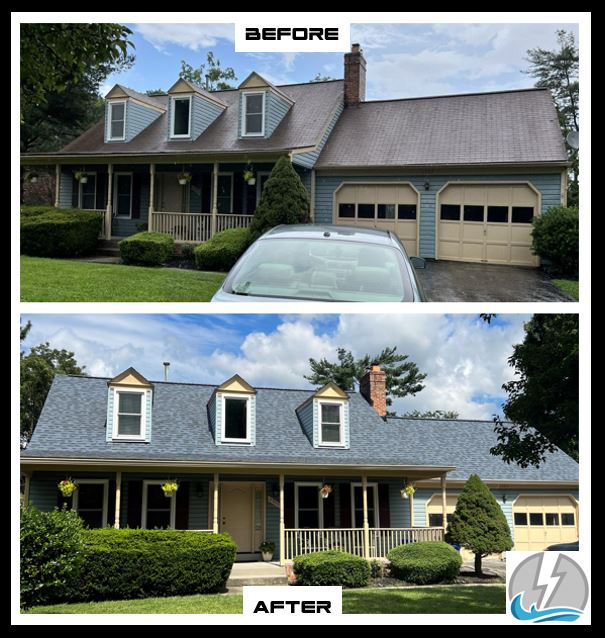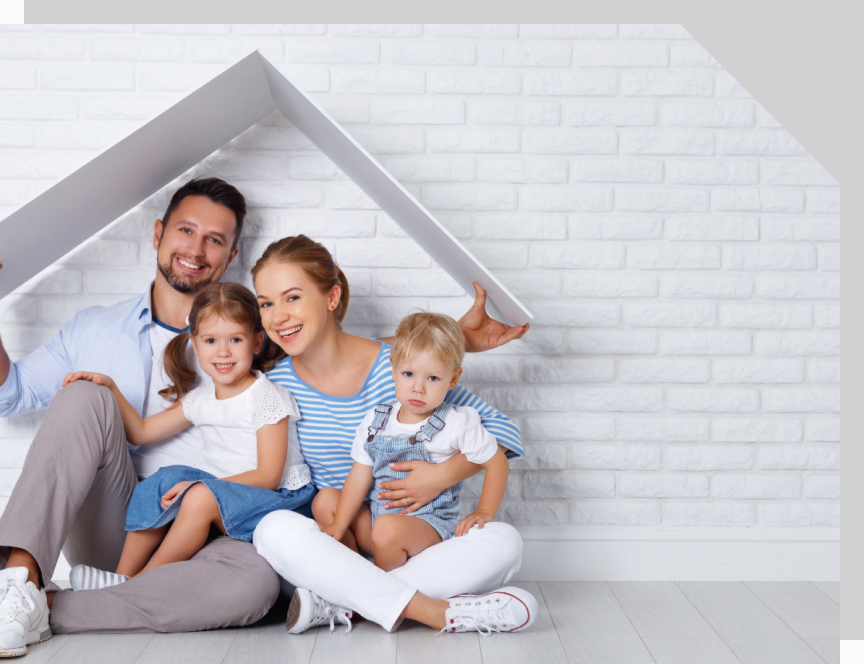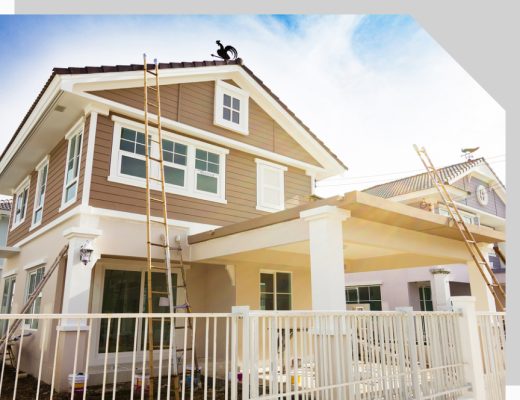Upgrade Your Property with Polymer Exterior Siding
Interested in updating your home’s exterior siding in Maryland with a versatile and stunning material? At Thunder Bay Roofing, we can provide high-quality polymer exterior siding solutions that blend modern technology with aesthetic sophistication. Led by Edgewater siding contractors, Nick Perz and Steven Friedman, our team is committed to providing exceptional craftsmanship and innovative approaches to meet all your exterior needs.
Contact our Maryland siding company at 410-956-7663 for a personalized, no-obligation consultation.

What Is Polymer Siding?
Polymer siding is a synthetic exterior cladding option made from high-quality polypropylene resin. It’s designed to mimic the appearance of traditional materials like wood or vinyl while offering enhanced durability and low maintenance as a type of plastic polymer. This top siding option is resistant to fading, cracking, and warping, making it suitable for various climates.
Benefits of Polymer Exterior Siding
Choosing polymer exterior siding means investing in a solution that delivers lasting value, superior performance, and eye-catching aesthetics. Key benefits include:
- Unmatched Durability: Polymer siding is highly resistant to impacts, fading, UV rays, and extreme temperatures, ensuring your exterior remains pristine for decades.
- Low Maintenance Siding: Forget constant upkeep. Polymer siding retains its vibrant color and finish, needing only an occasional wash to stay looking new.
- Energy Efficiency: Many polymer siding options include built-in insulation, contributing to lower energy consumption and utility savings by maintaining better temperature control inside your home or business.
- Flexible Design Options: Available in a vast array of styles, textures, and colors, polymer siding can perfectly replicate the appearance of natural materials, offering both beauty and strength.
- Moisture Resistance: Polymer siding is designed to resist moisture, preventing problems like mold, mildew, and rot, which are common with other materials.
Types of Homes Best Suited to Polymer Siding
- Traditional Suburban Homes: Polymer siding mimics wood while offering durability and low maintenance, making it ideal for classic suburban designs.
- Coastal Properties: Its resistance to moisture and fading makes polymer siding suitable for homes in coastal areas, where harsh weather conditions are common.
- Modern and Contemporary Designs: Smooth-finish polymer siding complements the sleek, minimalist architecture, providing a clean and uniform appearance.
- Multi-Family Residences: The durability and low maintenance of polymer siding make it a practical choice for apartments and townhouses.
- Historic Home Renovations: High-quality polymer siding can replicate traditional wood siding, serving as an alternative when restoration is not feasible.
- Energy-Efficient Homes: Insulated polymer siding offers added thermal protection, making it suitable for homes focused on energy efficiency.

Polymer Siding vs. Vinyl Siding
Composition: Polypropylene Resin
Polymer and siding material is made from a blend of polypropylene resins and other high-quality polymers. This composition results in a more robust and durable material. Vinyl siding, on the other hand, is primarily composed of polyvinyl chloride (PVC), which is a less expensive but also less durable plastic.
Durability
Polymer siding offers superior durability compared to vinyl. It’s more resistant to impacts, cracking, and warping, especially in extreme temperatures. Polymer siding can withstand hail and high winds better than vinyl, making it a more suitable choice for areas prone to severe weather. Vinyl siding materials, while still durable, are more susceptible to damage from impacts and can become brittle in very cold temperatures.
Appearance
Polymer siding typically provides a more realistic wood-like appearance than vinyl. Unlike wood siding, which requires extensive maintenance, polymer siding offers a wood-like appearance without the associated upkeep. Its manufacturing process allows for deeper embossing and more varied textures, closely mimicking the look of natural wood grain. Vinyl siding, while available in various colors and styles, often has a more uniform and less authentic appearance.
Color Retention
Both polymer and vinyl siding are available in a wide range of colors. However, polymer siding generally offers better color retention over time. It’s more resistant to fading from UV exposure, maintaining its original color for longer periods. Vinyl siding can fade more noticeably, especially in darker colors.
Insulation Properties
Polymer siding often has better insulation properties than standard vinyl siding. Some polymer siding products come with built-in insulation, enhancing the energy efficiency of homes. While insulated vinyl siding options are available, they’re typically less effective and energy efficient than their polymer counterparts.
Cost
Polymer siding is generally more expensive than vinyl siding due to its superior quality and performance. The initial cost of polymer siding can be 20 to 30 percent higher than vinyl. However, its longer lifespan and lower maintenance requirements can offset this higher upfront cost over time.
Installation
Both polymer and vinyl siding are relatively easy to install, but polymer siding often requires more specialized installation techniques due to its unique properties. This can result in slightly higher installation costs for polymer siding compared to vinyl.
Environmental Impact
Polymer siding is often considered more environmentally friendly than vinyl. It typically contains fewer harmful chemicals and can be recycled more easily at the end of its life. Vinyl siding, while also recyclable, contains chlorine and other potentially harmful substances.
Maintenance
Both vinyl and polymer siding are low-maintenance compared to natural materials like wood. However, polymer siding generally requires even less maintenance than vinyl. It’s easier to clean and less prone to mold and mildew growth.
Types of Polymer and Fiber Cement Siding
There’s a wide selection of polymer siding designs to suit diverse architectural styles and preferences:
- Wood-Effect Polymer Siding: Mimics the appearance of wood without the maintenance requirements.
- Stone-Effect Polymer Panels: Replicates stone exteriors but is lighter and easier to install.
- Shake-Style Polymer Siding: Resembles cedar shakes with improved durability and color retention.
- Smooth Finish Polymer Siding: Provides a clean, modern look for contemporary designs.
- Insulated Polymer Siding: Includes an additional layer of insulation for improved energy efficiency.
- Decorative Polymer Trim: Offers architectural accents, corners, and trim pieces to complement the main siding.

Polymer Siding Installation
Polymer siding installation is a precise process that requires attention to detail:
- Preparation: The existing surface is cleaned and inspected for damage. Any necessary repairs are made, and a weather-resistant barrier is installed.
- Starter Strip: A level starter strip is secured at the bottom of the wall to ensure proper alignment.
- Panel Installation: Panels are installed from bottom to top, overlapping each course. They’re nailed loosely to allow for expansion and contraction.
- Cutting and Fitting: Panels are cut to fit around windows, doors, and other obstacles using specialized tools.
- Finishing: J-channel, corner posts, and other trim pieces are installed to create a polished look.
Polymer Siding Maintenance
Polymer siding is low-maintenance, but some care is required to keep it looking its best:
- Cleaning: Annual washing with mild soap and water removes dirt and debris. Avoid pressure washers, which can damage the siding.
- Inspection: Regular checks for loose panels, cracks, or other damage allow for prompt repairs.
- Touch-ups: While polymer siding is color-fast, minor scratches can be touched up with manufacturer-approved paint.
- Pest Control: Although resistant to insects, periodic checks for pest infestations are recommended.
- Landscaping: Keeping plants and sprinklers away from the siding prevents moisture buildup and potential staining
Costs of Polymer Siding
The cost of installing polymer exterior siding depends on several factors, such as the size of your property, product choice, and installation complexity. Here’s a breakdown of typical costs:
- Standard Polymer Siding: $5 to $12 per square foot
- Premium Insulated Polymer Siding: $10 to $20 per square foot
- Professional Installation: $3 to $7 per square foot
Additional costs may include the removal of old siding, siding repairs to the underlying structure, and any customized design elements you choose.
Frequently Asked Questions
With proper installation and maintenance, polymer exterior siding can last over 50 years and typically comes with extended manufacturer warranties.
Polymer siding outperforms traditional vinyl siding in terms of impact resistance, color retention, and overall longevity.
Yes, many polymer siding products are recyclable, and some are made from recycled materials. Additionally, their long lifespan and energy efficiency add to their eco-friendly credentials.
Although polymer siding is designed to hold its color, it can be painted if necessary. However, doing so may void the warranty, so consult with us before proceeding.
